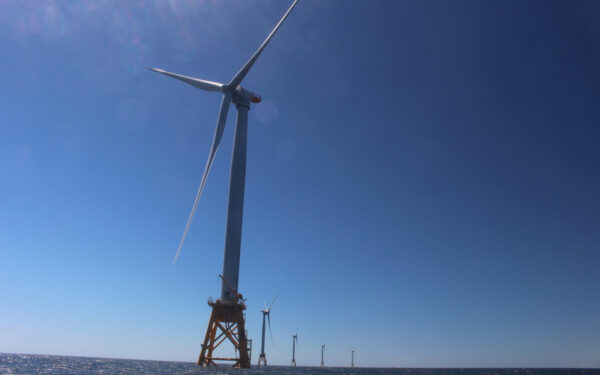In early April, a Massachusetts Superior Court judge threw out a 2018 state plan intended to guide development along a section of Boston’s waterfront that stretches from Long Wharf to the old Northern Avenue Bridge.
The process that led to that Downtown Waterfront Municipal Harbor Plan violated decades-old laws governing the city’s waterfront – including the public’s right to access waterfront areas. If allowed to stand, the plan would have cost the public greater access to Boston’s waterfront.
In 2018, CLF sued to prevent the plan from moving forward, and last month, the court ruled in our favor. Here’s what you need to know about that decision and what still is at stake in this critical case.
Can you explain the basics of the Downtown Waterfront Municipal Harbor Plan ruling?
The Downtown Waterfront Municipal Harbor Plan was problematic on several levels. It ignored state law that protects the public’s right to access tidelands. It failed to take into account the considerations of stakeholders and the public. And, it abandoned principles governing waterfront development that have been in place since 1990, particularly the size of buildings located at the water’s edge.
In addition, its approval process circumvented the law, specifically the Massachusetts Public Waterfront Act, also known as Chapter 91. The former Secretary of Energy and Environmental Affairs approved the plan, even though he did not have the legal authority to do so. That authority rests solely with another state agency, the Department of Environmental Protection (MassDEP). That is why CLF challenged the plan and the grounds on which the court ruled in our favor.
But wasn’t this lawsuit just an attempt to stop a development project that CLF doesn’t like?
No. Our lawsuit was not about the merits of any individual project. CLF has always supported and will continue to support thoughtful development that preserves the rights of residents to enjoy Boston’s waterfront.
So what was this case about then?
Development on Boston’s waterfront is regulated for very good reasons: It is an asset held in public trust for and shared by all Massachusetts residents, not just the wealthiest few. Chapter 91 has protected the public’s right to access the Massachusetts coast – including the City of Boston’s – since 1866.
Protecting that right means waterfront development must promote public access and benefit – not privatize the shoreline, wall off the water with large towers, or forfeit opportunities for major waterfront parks and open spaces that are welcoming to the broad diversity of people in Massachusetts. The legislature has charged MassDEP with the exclusive responsibility to make sure that happens.
Under Chapter 91, the municipal harbor planning process provides cities and towns with flexibility in meeting their obligations for public access to waterfront areas. It allows them to lay out a vision for public open space and development across multiple, connected waterfront sites rather than site by site. Across Massachusetts, 17 municipal harbor plans are in place to guide development in waterfront communities.
However, the process that led to the Downton Waterfront Municipal Harbor Plan did not function that way.
It should have considered and prioritized the needs of the public, but instead, it prioritized the concerns of the politically connected. It should have created an areawide vision for the waterfront that would provide substantial public benefits as required by the law, but instead, it established a precedent that, if a developer paid enough money to the State, they could build whatever they wanted on the waterfront.
Ultimately, the approval of the Downtown Waterfront plan followed a pattern in which the City of Boston, with the blessing of the former Secretary of Energy and Environmental Affairs, used the planning process to avoid waterfront development regulations. And the former Secretary signed off on it, even though he did not have the legal authority to do so.
So, we should celebrate this decision?
Yes! This decision will help restore the procedures protecting the public’s right to enjoy open access to Boston’s beautiful waterfront, as well as other waterfront areas around the state. It ensures 1) that the public isn’t cut out of the decision-making process around municipal harbor planning and 2) that MassDEP, which has the proper experience and expertise, is the sole regulatory agency making waterfront development decisions.
But this decision is just the beginning. We have a lot more work to do to make sure the public has robust and equitable access to Boston’s waterfront consistent with its rights.
Does the court’s ruling apply to all municipal harbor plans, including those in other communities, or just the one for downtown Boston?
The court did not invalidate existing approved harbor plans around the state. They remain in place. The ruling applies only to the 2018 Downtown Waterfront Municipal Harbor Plan.
So what happens now?
The State can appeal the court’s decision if they choose to do so.
Also, the current Secretary’s office and MassDEP have indicated that they will propose new regulations that correct the unlawful actions of the former Secretary and settle any uncertainties about prior Secretarial approvals in other municipal harbor plans. The public will have the opportunity to comment on those proposed regulations and public hearings will also likely be held on them.
It will be critical that everyone who cares about protecting the public’s rights to use Massachusetts waterfronts weigh in when those new regulations are proposed. We have the opportunity to use this regulatory process to turn a new page on waterfront development in the Commonwealth – a page that will ensure that waterfront development and the public’s rights to use and enjoy our waterfronts go hand-in-hand for decades to come.
I don’t live near the waterfront. Why is this important to me?
Whether you live near the waterfront or not, every Bostonian has made major investments in cleaning up Boston Harbor – and keeping it clean. That, along with state law, gives all of us the right to fully enjoy and take advantage of the area. It also gives all of us the right to have a say in its future.
We already know that many Black and Brown Boston residents feel unwelcome in the Seaport neighborhood. We don’t want the same outcome for the Downtown waterfront. As the City and State determine the next steps for the area, everyone who lives or works in the Greater Boston area should make their voices heard.
This is a once-in-a-generation opportunity to create a world-class waterfront – a People’s Harbor – where all Bostonians feel welcome. We should take it.
Sign our pledge to protect the People’s Harbor.




